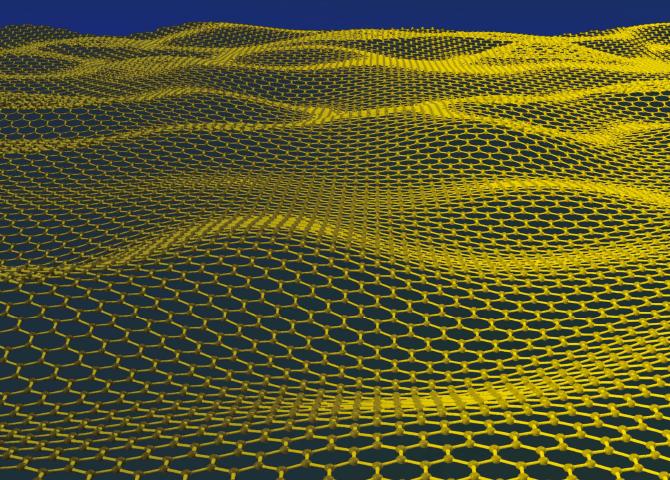In 2010, the Nobel Prize in Physics was awarded to two scientists who first isolated the substance graphene - single-layer crystals of the known substance graphite. Now, researchers at the University of Houston are trying to develop a method for the commercial production of this revolutionary material

In 2010, the Nobel Prize in Physics was awarded to two scientists who first isolated the substance graphene - single-layer crystals of the known substance graphite. Now, researchers at the University of Houston are trying to develop a method for the commercial production of this revolutionary material.
Graphene has several unique properties that make it different from any other material known to science: it is the first two-dimensional material ever developed; The thinnest and strongest material known; The best heat conductor found so far; A much more efficient conductor of electricity than copper; It is actually a transparent material; And it is so compressed that no type of gas can pass through it. These properties make graphene a very important component in diverse fields, from energy storage devices to flat displays.
The most important feature of graphene, probably, lies in its ability to be used as an alternative to silicon material in computer chips. Graphene's properties will allow the constant tide in computing power to continue to exist in the decades to come.
However, in order to realize these advantages, it is necessary to find a method to produce a large amount of graphene of good quality, without defects. Qingkai Yu, a professor in the Department of Electrical Engineering at the University of Houston is developing methods for the commercial production of such high-quality graphene.
The researcher uses a technology known as "chemical vapor deposition" (CVD). In this process, he heats methane to a temperature of 1000 degrees Celsius, splitting the material into its building blocks - carbon atoms and hydrogen atoms. In the next step, the carbon atoms bond to a metallic surface to form the graphene.
"With this method it is possible to produce high-quality graphene, cheaply and in commercial quantities," explains the researcher. The researcher first described the ability to use this method to produce graphene two years ago in an article published in the scientific journal Applied Physics Letters. Since then, he continues to improve this important process.
In the first stages of his research, the method led to obtaining several layers of graphene bonded together by a nickel surface. He then discovered the efficiency of using copper to produce graphene. Since then, graphene scientists have adopted the use of copper surfaces as the preferred surfaces.
Yu's work is not over. The individual layers of graphene obtained today using his method consist of multiple graphene crystals that are joined together during the synthesis. The points where these crystals connect, known as the "core boundaries", are actually structural defects that limit graphene's usefulness, especially as an alternative to silicon-based computer chips. The researcher tries, due to this drawback, to produce extensive layers of graphene originating from a single crystal.
"You can easily see how important such high-quality graphene is," explains the researcher. "The field of semiconductors has become a capital-intensive industry based on single crystals of silicon, and graphene is considered the material of the post-silicon era. So graphene single crystals are essentially the holy grail and the coveted destination of next-generation semiconductors."
